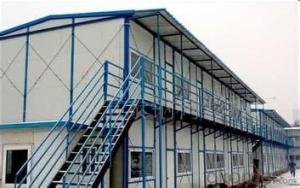When it comes to heating, ventilation, and air conditioning (HVAC) systems, one of the most critical aspects is ensuring that the airflow is optimized for efficiency and performance. This is where the concept of CFM, or cubic feet per minute, comes into play. But what exactly is CFM, and why is it so important for HVAC units? Let’s dive into the world of flexible ducts and how CFM calculations can make a significant difference in your home or office’s comfort levels.
Understanding CFM
CFM stands for ‘cubic feet per minute,’ which is a measure of the volume of air that moves through an HVAC system in a minute. It’s a crucial metric because it helps us understand the capacity of our HVAC system to deliver the right amount of air to the spaces it serves. Imagine trying to water a garden with a hose – if the hose is too small, the water won’t reach all the plants, and if it’s too large, you might end up flooding the garden. The same principle applies to HVAC systems.
The Role of Flexible Ducts
Flexible ducts are an essential component in HVAC systems, especially in residential settings. They are used to connect the air handler to the various supply and return air registers throughout a building. The flexibility of these ducts allows for easier installation and can navigate around obstacles that rigid ducts cannot. However, their flexibility also means that they can sometimes restrict airflow if not designed and installed correctly.
Factors Affecting CFM in Flexible Ducts
Several factors can affect the CFM in flexible ducts, including the diameter of the duct, the length of the duct run, the number of bends and turns, and the presence of any restrictions or obstructions. Each of these factors can either increase or decrease the airflow, impacting the overall efficiency of the HVAC system.
Calculating CFM for Flexible Ducts
Calculating the CFM for flexible ducts involves a few steps. First, you need to determine the static pressure of the system, which is the pressure required to move the air through the ducts against friction and other resistances. Next, you’ll need to measure the duct’s dimensions and calculate its equivalent diameter. From there, you can use a duct calculator or a CFM chart to find the airflow rate.
The Importance of Proper Sizing
Properly sizing your flexible ducts is crucial for maintaining optimal airflow and ensuring that your HVAC system operates efficiently. Oversized ducts can lead to increased energy costs and poor air distribution, while undersized ducts can cause the system to work harder than necessary, leading to reduced efficiency and a shorter lifespan for your equipment.
Common Mistakes to Avoid
When calculating CFM for flexible ducts, there are some common mistakes to avoid. These include not accounting for the effects of friction, not considering the impact of duct length and bends, and neglecting to check for any obstructions or leaks in the ductwork. By being mindful of these factors, you can ensure a more accurate CFM calculation and a better-performing HVAC system.
Balancing Airflow for Maximum Comfort
Once you’ve calculated the CFM for your flexible ducts, the next step is to balance the airflow throughout your HVAC system. This involves adjusting the dampers on the supply and return registers to ensure that each room receives the appropriate amount of air. Balancing the airflow not only improves comfort but also helps to maintain consistent temperatures and humidity levels throughout the building.
Maintenance and Inspection
Regular maintenance and inspection of your HVAC system, including the flexible ducts, are essential for keeping the CFM at optimal levels. This includes cleaning or replacing air filters, checking for leaks, and inspecting the ducts for any signs of wear or damage. By staying on top of maintenance, you can prevent small issues from becoming bigger problems and extend the life of your HVAC system.
The Bottom Line
In conclusion, understanding and calculating the CFM for flexible ducts in your HVAC system is vital for ensuring that your home or office is comfortable, energy-efficient, and well-ventilated. By taking the time to learn about the factors that affect CFM and how to calculate it properly, you can make informed decisions about your HVAC system and enjoy a space that’s perfectly tailored to your needs. So, the next time you feel a draft or a stuffy room, remember that it might just be a matter of adjusting the CFM for your flexible ducts.

